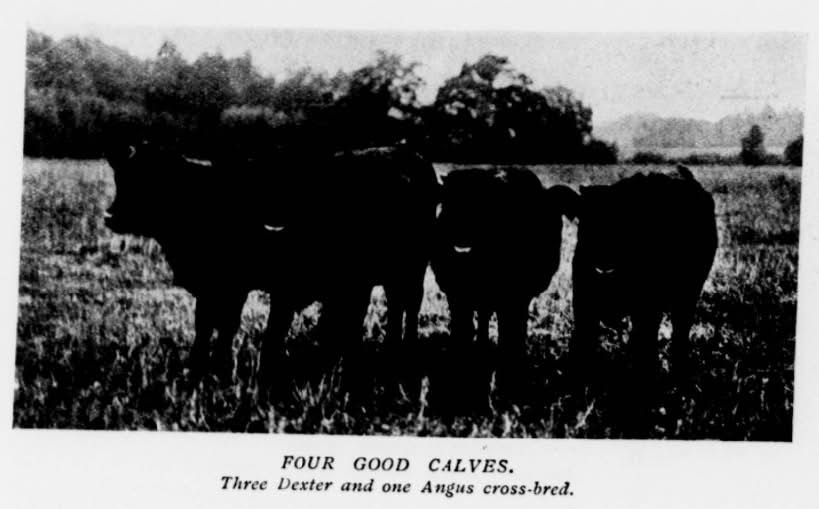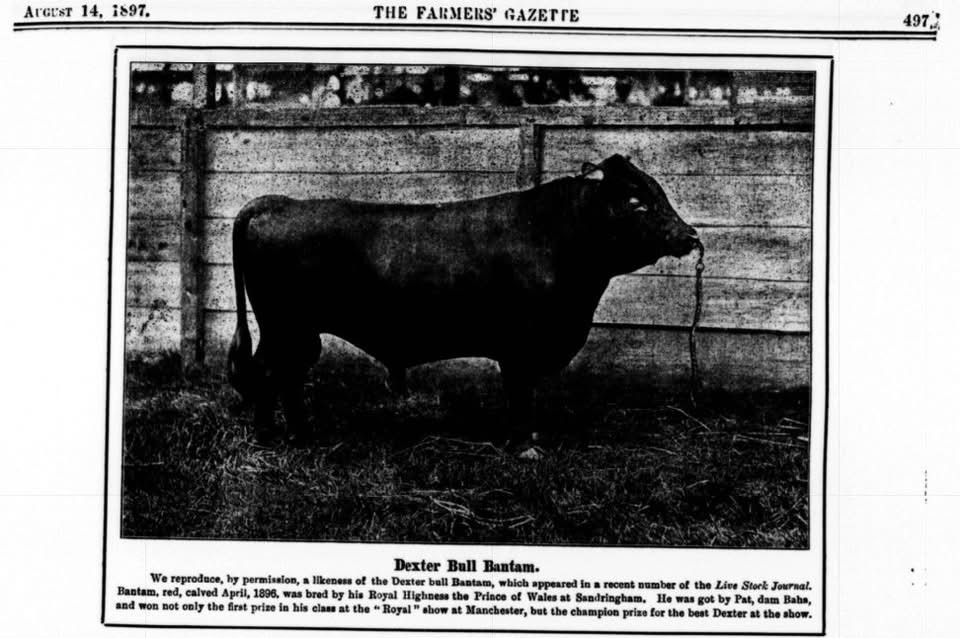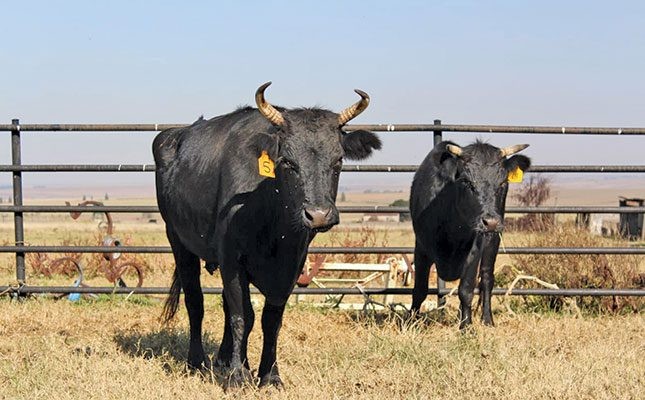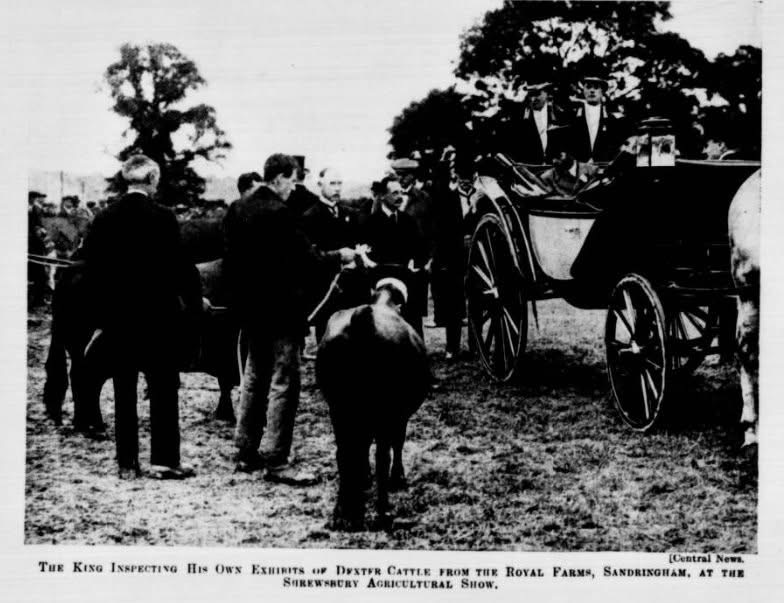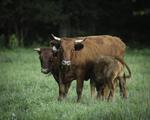Article from 1906 Ladies Field
This article mentions some interesting information about Dexters.
- The owner of these Dexters mentions having pastures that were rough and neglected with no accommodation for heavy cattle, so Dexters were the most suitable cattle for the location.
- She received young 2-3 year old heifers who had been out doors their whole lives and therefor needed no buildings to shelter them, and throve well, having plenty to range, on the rough pastures. In frosty weather they were given a little hay, but they have no concentrated food of any sort, except a handful of oats now and then from Mrs. Hoare’s coats pockets. (I personally can relate to this comment on Dexters just getting a treat here or there but not needing a concentrated feed regimen)
- Though they were wild they became pets in short time except for one shy heifer.
- Five of the heifers were bought in calf but two of them were Aberdeen Angus crossbreeds. Miss Hoare had a first intended to sell these for veal, as she had at first only intended to keep store stock, but when the little curly-coated (pure Dexters historically were known to have fine and silky hair) babies arrived she was so charmed she decided to keep them instead. In the picture of the four calves, the cross- bred one may easily be distinguished by the absence of horns and the peaked forehead.
5.Perhaps the prettiest of the cows is Daisy, whose portrait is given above. She is an Irish bred one, long and low, with a very stylish head and horn. The most perfectly shaped of all is Brindle, as her name implies, she is not a fashionable color (Did not meet the breed standard), otherwise she would be good enough to win in very good company, but her calf is black as coal.
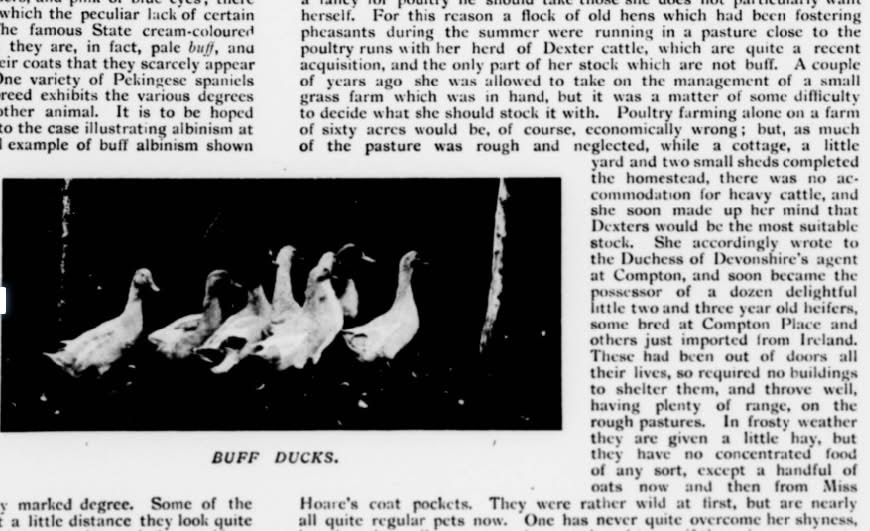
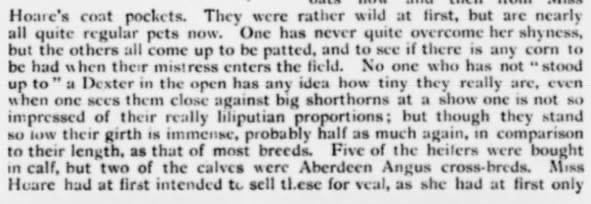
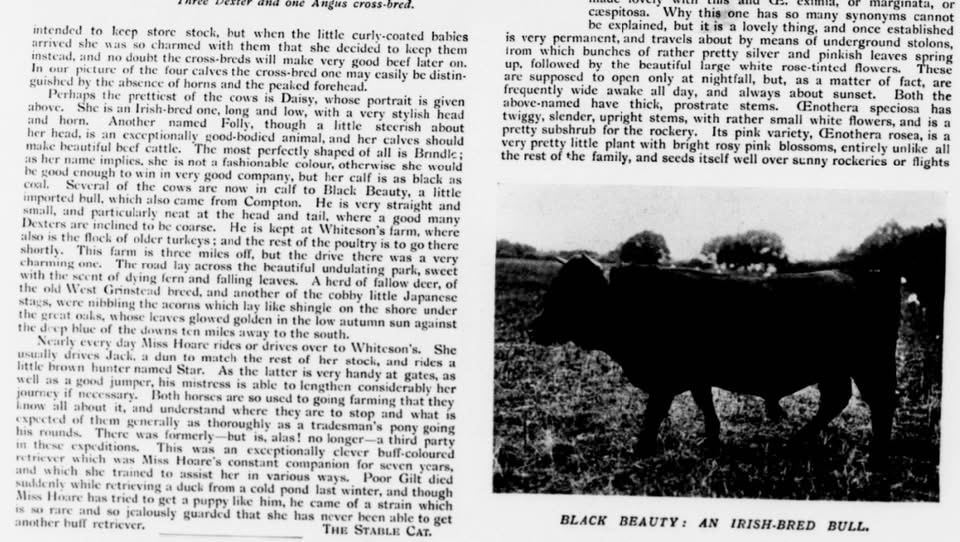
Article from 1906 Ladies Field Read More »
Historical
